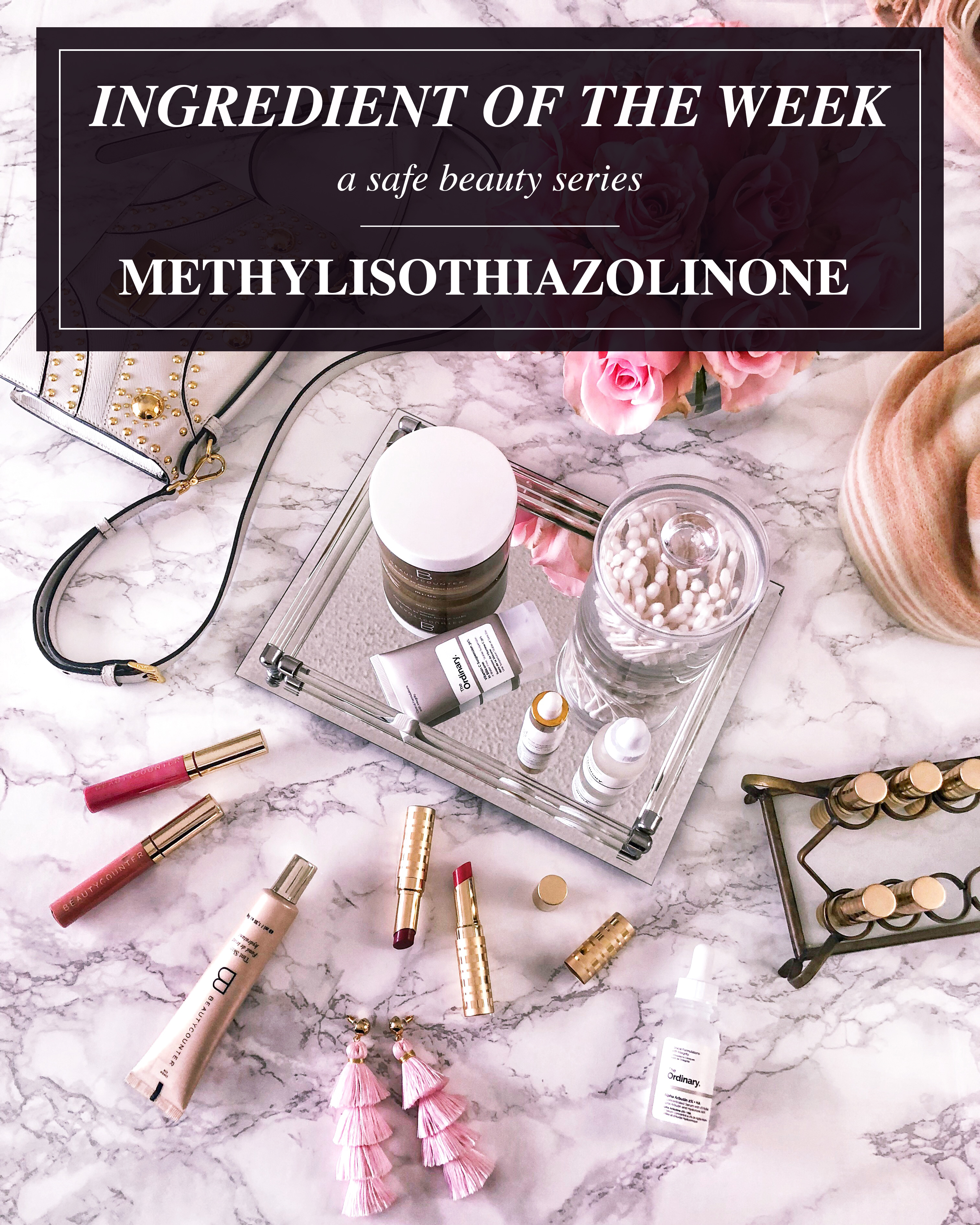
For this week’s Ingredient of the Week post I’m talking about two of the longest chemical names I’ve ever seen. I’d be lying if I said I could pronounce these let alone type them out. So what are they? Methylisothiazolinone and methylchloroisothiazolinone.
If you missed the intro to this series, it explains what “safe beauty” is, and why it’s important. The quick version is that the FDA doesn’t regulate what chemicals brands put in their products and it doesn’t set standards for words like “natural” or “organic”. Basically, a brand could put “natural” on a container full of carcinogens if they wanted (and they often do). I caveat this at the beginning of every post not to scare anyone but to educate. You don’t have to switch everything you own to safer today. Just make small changes where it makes sense for you. After all, doing something is better than doing nothing, right?
If you’re completely overwhelmed right now, take a look at my skincare routine and my everyday makeup routine. Since most of the products we use fall into one of those two categories, it will give you an idea of some great beauty products to start with. Of course, if you have any questions, shoot me an email or send me a DM. I chat with you guys all day long about personalized recommendations based on your needs! If you want more, here’s a list of my favorite beauty products!
What to look for.
Thanks to the long names, both of these chemicals are usually easy to spot on labels. They do have some abbreviations too so watch out for those.
2-methyl-4-isothiazoline-3-one
5-Chloro-2-methyl-4-isothiazolin-3-one
CMIT
Methylisothiazolinone
Methylchloroisothiazolinone
MIT
MI
Microcare MT
Neolone 950 preservative
What are methylisothiazolinone and methylchloroisothiazolinone?
Both of these chemicals are preservatives that are part of a group of isothiazolinones. If you read the post on parabens (some of the most common preservatives I find on almost every label), then you know what preservatives do! They make your products last longer. They are less likely to culture mold, “turn” (AKA go bad), and expire. Methylisothiazolinone is also commonly used as a sanitizer because it controls the growth of microbes (bacteria) in water.
Why do brands use methylisothiazolinone and methylchloroisothiazolinone?
When products have a longer shelf life, the brand has to spend less money replacing expired products. There is also less of a chance that we as consumers open it only to find out the product has gone bad. I mean who hasn’t let something sit in their medicine cabinet for a few months at least once?
What products contain methylisothiazolinone and methylchloroisothiazolinone?
Since they decrease bacterial growth in water, both of these chemicals are found in products that contain water. While we usually think of liquids as containing water, a lot of lotions and creams also list water as their number one ingredient. So, methylisothiazolinone and methylchloroisothiazolinone can be found in almost all of our personal care products! Here are a few to be extra cautious of: sanitary wipes, lotions, shampoo, body wash, and sunscreen.
What methylisothiazolinone and methylchloroisothiazolinone can do to you.
Methylisothiazolinone is a 7 in Skin Deep’s database and methylchloroisothiazolinone is a 6. On a scale of 0 being the least toxic and 10 being the most, that’s pretty toxic. So much so that the EPA is increasing regulations on the size of the molecules to mitigate risk of exposure.
Skin irritants. Both of these chemicals are known to be allergens to human skin. They can cause contact dermatitis (gross skin issues) after even a few uses. In high concentrations, methylchloroisothiazolinone causes chemical burns to the skin. While your beauty product probably doesn’t contain high concentrations, this is a chemical you don’t want on your skin.
Organ toxicity. Exposure to these chemicals can lead to swelling of the lungs and intestines.
Nervous system. Prolonged exposure to isothiazolinones has been linked to damaging effects on the central nervous system.
Safe alternatives.
Since methylisothiazolinone and methylchloroisothiazolinone are in so many products, here are a few of my favorite alternatives:
- body oil (better than a lotion)
- face lotion (adapts to your skin for 24 hours)
- shampoo
- body wash
- sunscreen (just launched last week!)
Have you used anything that contains methylisothiazolinone and methylchloroisothiazolinone? Do you have any favorite safe beauty products of any kind? Leave your recommendations below – I always love getting new beauty tips!
Nice post